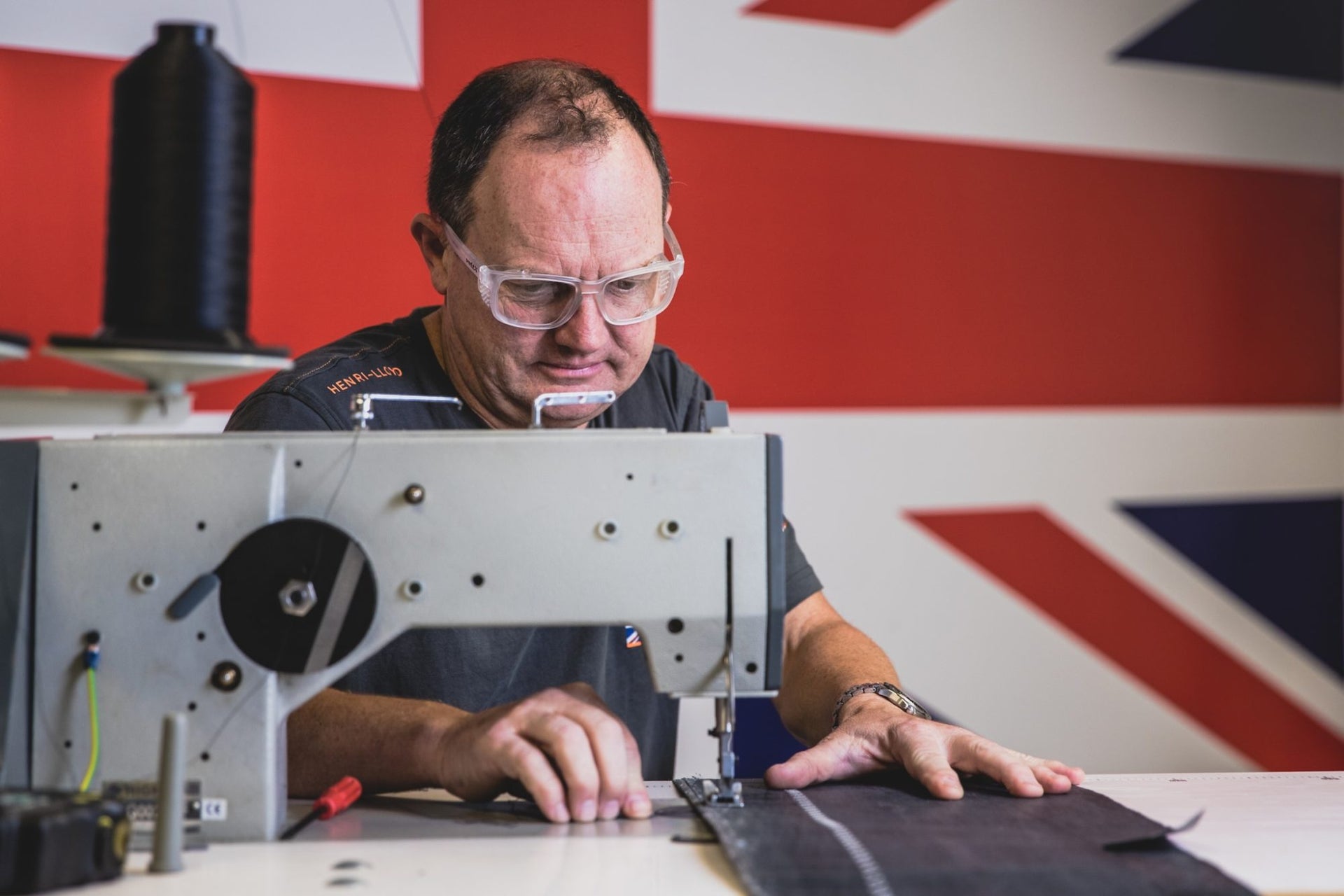WINGS OUT, SAILS IN
WINGS OUT, SAILS IN
The Return Of Traditional Sailmaking

This article was first published by INEOS TEAM UK, November 2019
Sails have taken a change in direction for the next edition of the America’s Cup and with it comes the return of more traditional sailmaking. OUT are the semi-rigid 23 metre wings that were used on the 50’ ACC catamarans, IN are the new double-skinned mainsails that are now raised and lowered 26m to the top of the mast.
The revolutionary new design brings some of the aerodynamic advantages of the wing into the traditional sailing world. The two ‘sail skins’ that constitute the mainsail are attached to the rig, one to each corner of the back of the D-shaped mast section. It’s a 3Di product from North Sails, made from carbon fibre and equipped with buoyant material or airbags at the top, to provide buoyancy in case of capsize. The rig is one design, developed and produced by Southern Spars.

Each team can produce up to 10 mainsails under the rules. Along with the mainsail you have the jibs and code zeros. There are five jib sizes to accommodate the different conditions and they weigh around 60kg each. Unlike the main, they are a single skin construction. The code zero, used in lighter sailing conditions has replaced the traditional spinnaker on the downwind legs, but could also be used upwind when it’s very light.
The previous wing concept was complex and required a specialist operations team and a crane to attach it to the platform. The new mainsails need support from more traditional sailmakers and allow the team to change sails on the water. The INEOS TEAM UK sailmaking team is three strong, headed up by Sail Loft Production Manager, Ian ‘Shinzy’ Pattison alongside sailmakers Sam Haines and Danny Leech.

Shinzy has campaigned with numerous Cup teams, whereas for Sam and Danny the AC36 will be their first. Sam has over 20 years of sailmaking knowledge and provides some insight into the new sail concept: “The nice thing about this type of sail, compared to the previous wings, is that it does bring back the more traditional skills and machine work, which I think some people have been missing in the previous editions.
“The mainsail is the biggest sail on the boat; it is the primary device for controlling and powering the boat. It’s the equivalent to having a rudder in the sky! Iain

These controls have a big impact on the balance of the boat, and the mainsail trimmer must work very closely with the helmsman to control the boat and keep it going fast.
“The main sail is essentially the same product you see out on a 30-foot sailboat out on the Solent, just some of the engineering is different because of what we are trying to achieve with these AC75s. There’s a lot of components inside the sails so the boat builders are manufacturing these for us, there’s a lot of involvement from the different trades within the team.
“We are still in a development phase and looking at different concepts and set ups. However, a lot of the thinking has come from how the wing sails worked, so we are trying to adapt this concept into the soft sail. We are really going to be pushing the boundaries.”
Sam described a typical sailing day for him and the team. “The mainsail goes on the boat around 15-20 minutes before we are due to leave the dock. Then out on the water there’s one or two of us out there from the sail loft, in case we need to make any quick repairs and to assess if any changes need to be made.
“But our day really starts when the team get back! We bring the mainsail, jib and code zero into the base, check all the internal and external components, check the corners and batten tensions to make sure there’s no wear and tear we have missed. It’s around three hours of checking per sailing session.”

“It’s a really exciting time to be a sailmaker in the America’s Cup and I think this concept can – and will – eventually trickle down to the wider sailing industry.”



























